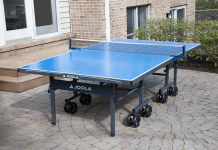Checkers is a fast-paced and fun-filled game that provides entertainment for players of all ages and skill levels. If you’re looking to improve your game, you can incorporate checkers strategies such as having a good opening sequence, controlling the center of the board, and making a checker sacrifice when necessary.
Does this all sound foreign to you? Not to fret. From the aim of the game and why it’s so good for your mental health, to top strategies to be crowned the checkers king or queen at your next game night: this article is chock-full of everything checkers-related.
We’ve done the research so that you don’t have to. So sit back, relax and let’s get your checkers game to a whole new level.
Dare I say it, let’s check out the game of checkers (please hold your applause to the end).
Table of Contents
My Introduction To The Game of Checkers.
Look, we’re all friends here, so I’m just going to lay out all my cards and be honest with you: I started playing checkers because my teachers said I wouldn’t understand chess.
Wow, does that feel good to say (type?) out loud.
As I refused to give up (and my parents said I should do at least one extra curricular activity that did not involve reading), I signed up for the checkers club instead.
I’m sure my teachers were right, because this (fairly basic) game also took me a while to understand, but once I got the hang of it there was no looking back. It’s fast-paced and to the point, always keeping a player on their toes.
In my humble opinion, this game is great for everyone, and much more entertaining to watch than other outstretched games (hey, not that I’m holding a grudge).
From improving your concentration skills to helping you make good judgment calls, there are also a multitude of benefits to playing this great game.
From Beginner to Winner: Strategies to use while playing checkers
As you can see, checkers is a fast-paced game. Blink and you might go from kinda getting the hang of the game to losing all your pieces within seconds.
Here are a few strategies to use to make the most of your game play, and to ensure you win (almost) every time.
1. All About Introductions: Have a good opening sequence
White only has seven opening moves to choose from, so be sure to choose the right one. Black, on the other side of the board, can only respond in seven different ways. I suggest developing your centerpieces, so you can quickly get them to the center of the board.
Read why this aspect is so important below.
2. Control the center (Of Attention)
Just like in chess, the center of the checkers board is where you want to be! This is an easy-to-master strategy of getting the most out of your pieces and scaring your opponent into a forfeit.
Related Article: Monopoly Deal Strategies
From the center of the board, your pieces have many more squares to choose from to make their next move, as opposed to when you send your piece to the side of the board. On the side, there is not much room for them to progress and attack the enemy line.
3. A Royal Affair: Get Kinged
Although, perhaps, easier said than done, a sure way to add power to your troops is by getting a kinged checker in the mix. When planning your strategy, ensure that this includes getting one (or three, the more the merrier!) of your pieces to the opposite side of the board to get it promoted to a king.
This will enable the piece to move forwards as well as backwards, giving you a lot more power over the outcome of the game (which will hopefully be in your favor).
Related Article: Jenga Strategies to Topple Your Opponents
4. Team Work Makes The Dream Work
Ah, the power of team work. Never to be underestimated! No, we’re not talking about being in cahoots with your opponent or cheating, but rather by using your checkers pieces in teams.
This can be done by creating a checkers chain.
Moving a single checker forward is often a rookie mistake, as this leaves space and opportunity for opposing pieces to jump your pieces and add them to their list of captured checkers victims. Keep in mind: a lone checker is a checker in danger!
Instead, advance to the enemy lines by moving a few checkers behind each other. This can be referred to as creating a checkers chain or building bridges of a diagonal line. This diagonal line usually leaves two spaces between you and your opponent, which allows you to move forward by also being protected by your line of checkers behind you.
What work? Team work!
Related Article: Complete Clue Strategy Guide
5. Sometimes, You Just Need To Let A Piece Go (#SorryNotSorry)
Look, I don’t like it any more than you do, but sometimes you just have to sacrifice one of your checker pieces. There, I said it.
But do not fear, your sacrifice will not be in vain. A sacrifice in checkers often means allowing one of your pieces to be captured, to enable you to move forward and capture an enemy piece.
As with the above-mentioned checker bridges, opponents may also have rigid protection plans in place, which make it difficult to enter their war zone, if you will. By sacrificing a piece for capture, you can open the floodgates and head on over to capture town, as well as a clear path to being kinged.
Now that’s a path we’ll be willing to make a sacrifice for!
6. Stay At Home (It’s A Pandemic, After All)
Sometimes, you just need to know when to cancel your plans and stay at home. The same goes for your little checker pals over at home base.
Let’s cut to the chase. In checkers, we all want to be kinged, right? It’s the ultimate move to showing your superiority, and honestly who doesn’t want that.
Related Article: Battleship Strategy to Sink Your Opponent
So, don’t imagine that your opponent won’t be planning exactly the same strategy. By keeping your home base lines occupied for as long as possible, your poor opponent won’t know what hit them when they think they’ve reached the end of the board and expect a promotion.
A general rule of thumb is to only move your home base piece when absolutely necessary. Such as when you are forced to capture a piece, or when you are running low on checkers.
7. Royal Flush: Keep An Eye On The King
As your pieces on the board get fewer, the opportunity grows for your opponent to reach the end of the board and turn their pesky little pieces to mighty kings. Hey, we appreciate the feature of promotion when it’s on our side, but that doesn’t mean we have to like it when it happens to our opponent.
Once your opponent has a king (or, forbid, kings) they’ll be able to move much more swiftly on the board and place your precious pieces in dangerous circumstances.
Remember to keep a lookout for these pesky kings, and keep in mind that they can now move forwards and backwards.
Granted, if you just can’t wait to be king (to quote animated icon Simba from The Lion King) it will certainly count in your favor.
Related Article: Boggle Strategy Ideas
8. Trade to Get Ahead
Remember that your checkers army only consists of twelve pieces. At least that’s nearly half more than the 7s U.S National Women’s Rugby Team has, and they’re always on a winning streak!
But I digress.
With only 12 pieces on the board, and the fast pace of the game, you may soon end up with only seven to eight pieces. However, that also means that you have a three to four piece advantage, which can get you closer to promotion, as well as to preventing the enemy lines from capturing your pieces.
With great risk and sacrifices often come great rewards, which is certainly the case in the good ol’ game of checkers!
9. Out Of Luck? Block Your Opponent
Ideally, in your perfectly strategized game of checkers, you will always be on the winning side. However, games will occur when you think you have no other option but to surrender and give your opponent gloating rights until the next dinner party.
Prevent losses and forfeits by playing the blocking game. If you can block your opponent’s piece, no matter how few pieces you have left, you will ultimately win if your opponent can no longer move.
See, all is not lost! Just stick to your game plan and see how you can get in the way of your opponent’s pieces.
Related Article: Complete Catan Strategy Guide
10. It’s OK To Be Offensive
Only on the checkers board, of course. In this fun and fast-paced game, it’s often the best strategy to go on the offensive.
As you’ve realized by now, you have to make a move in checkers, otherwise you forfeit the game. If you keep your pieces close to home, your opponent will move ahead regardless, forcing you to make moves that might not capture a piece at all.
Instead of sitting at home all dressed up with nowhere to go, get a strategy in place and move those soldiers forward! Just keep in mind to keep a few checkers on the home base, in case a pesky opponent tries to become king – not in your town!
11. No One Puts Baby In A Corner But You
Let’s backtrack a bit. As you likely know, the checkers board is identical to that of a chess board. Meaning, it is one large square made up of 8×8 smaller squares that alternate (traditionally) between white and black. This created that checkered look that, odly, is also my dream look for kitchen tiles.
Related Article: Exploding Kittens Strategy
In checkers, all gameplay only occurs on the dark squares, which is why each player will find a double corner to their right hand of the board (on the line closest to the player).
And now, to skip to the good part. If you attack a player’s double corner, it makes it easier for a crowned piece to emerge from there as from – you guessed it – a single corner.
12. Practice (Against Worthy Opponents) Makes Perfect
Winning isn’t everything, it’s the only thing. No, just kidding. No matter how fun it is to win a game of checkers, to improve your game you will also have to face a few losses.
Although reading about the topic of checkers is a great way to understand the theoretical aspects of the great game, somewhere you’ll have to put those theories into action. Do this by playing against a player who is better at the game than you are. Lose humbly (you can cry in privacy at home) and learn from their strategies.
Remember, no master started out great! Unless you’re Marion Franklin Tinsley, which if this is the case, we bow down to your legendary greatness.
Related Article: Uno Strategies to Increase Your Odds of Victory
The History Of Checkers
You know we love ourselves a little dash of board game history, so let’s backtrack to 3,000 B.C.E, when historians believe that the oldest form of checkers was played.
Now, for those of you who may not be familiar with this time in history, it corresponds to the Early to Middle Bronze Age. That’s right, way back when the earliest empires in the Ancient Near East came into existence, followed by Ancient Egypt’s Dynastic Period and the Old Kingdom.
Basically, a seriously seriously long time ago.
But back to checkers. Proof of the ancient game was found by an archeologist in the ancient city of Ur in Iraq. Historians, as they do, studied all that they can about the game, and discovered that it was historically called Alquerque.
In this ancient game, two players each had twelve pieces to begin with, which were arranged on a board only five spaced wide and deep, with an open space in the middle.
Fascinating stuff history, wouldn’t you agree?
Why Play Checkers (As We Know It Today)?
With so many modern day games to choose from, you might ask this relevant question: why play checkers at all?
Well, for one, it’s loads of fun! But don’t take my word for it. Here are a few researched benefits and advantages of playing this interesting game:
It’s easy to teach to children
Chess is great and everything, but have you ever tried explaining it to youngsters? Chances are that they quickly lost interest.
Checkers, on the other hand, is a straight-forward and easy to play game that even the young ones in your home will enjoy. Plus, it paves the way for interests in other games, such as – dare we say it? – chess.
Checkers teaches you sound judgment
We make decisions daily. White bread or brown? Sugar or low-fat? Cereal or toast? Granted, you likely have other hard-hitting questions to answer too: take a new job or stay where you are? Move to the city or rent a country home?
Checkers by no means will help you solve all of life;s burning questions, but it will teach you how to make well-informed decisions while on the spot. In this game, you have to quickly decide which move you’ll make, or you’ll face the consequences.
This is all decision-making that can help you (or that youngster that you are teaching the game to) make other well-informed decisions later in life.
Checkers improves your concentration
Miss a beat and you might just lose a piece (or a game), which is why concentration is so important when playing a round of checkers.
It may take a while to get the hang of it, but ultimately you are more than likely to improve your concentration skills. Just like with sound judgment, this is a positive aspect that influences all parts of your life; a benefit that should not be ignored.
How To Play Checkers
So, you’re interested in learning about the wonderful world of checkers? Welcome, you won’t be sorry!
From how to set up your board and move those little round objects, to understanding the aim of the game, and the best strategies to play an excellent game: bookmark this page or print it out and stick it to the fridge, here is everything that you need to know about the beautiful game of checkers.
The Setup
Checkers is a fun game that involves two players sitting across from each other. Much like with chess, this game takes place on a checkered board, usually in black and white, depending on the style of your board.
No matter the color of your squares, the light colored square must always be positioned in the right bottom corner.
You may see that some checkers pieces have crowns or kings on one side. If this is the case, always place the pieces with the crown facing down towards the board. We will discuss the other side of the piece – which is used during promotion – under the “How does promotion in checkers work?” section of this article.
Before kicking off your game, it’s time to set up the checkers. Each side has twelve pieces. These are always positioned on the dark colored squares of the board, with the light squares between the pieces left empty. For example, if the board that you are using is black and white, the checkers pieces will only be placed on the black squares.
And that’s it, you’re all set to get the game started! But first, let’s take a look at the objectives of the game.
The Aim Of The Game
The objective of the game is to capture all your opponent’s pieces, or to trap your opponent until they no longer have any moves to make. In the latter case, they will have to forfeit the game, in which case – you win!
As you can see, checkers is quite straightforward, without the rigid and often complicated rules and gameplay methods of other board games. This makes checkers the ideal game for players of all ages and skill levels. Plus, it’s such a fun and easy way to kill time! I bet once you get started, you won’t be able to stop.
Game play
Alright, here we go! It’s time to teach you exactly how to lay the great (and easy) game of checkers.
Player one, usually the player with the lighter colored checkers, kicks off the game by making the first move.
How do checkers move?
Checkers move forward diagonally in any direction, but can only do so by moving one space at a time.
After player one has made their move, it’s time for player two to start their game strategy, by also moving a checker one space at a time, diagonally.
Keep in mind that, as the pieces start on a dark color and only move diagonally, they will always move on the same color. You will never, for example, see a checker moving diagonally on white squares. If you do, you know that a mistake has slipped in somewhere!
How is a checker captured?
A checker is captured when an opponent jumps the other player’s checker. This move can only be completed when the square behind an opponent’s checker is empty.
Interestingly, and this is where the real fun begins, multiple captures can be made if there is more than one square open behind your opponent’s checker. However, this must be done within one move, and by using the same checker.
The capturing process works as follows: if your checker jumps over a piece and lands on the square behind it, you remove the piece that you jumped over from the board, indicating that you have captured the piece.
As you know, the objective of the game is to capture as many of your opponent’s pieces as possible until they have no pieces left in their arsenal. Once you get into this satisfying game, there really is no slowing down!
After a checker (or multiple checkers) have been taken, it is the other player’s turn to make a move. This process continues until the game has a winner. As an avid reader of this blog, we just know that that winner will be you (*hint hint, nudge nudge*)!
How does promotion in checkers work?
Much like in chess, checkers has a promotion process that motivates pieces to reach the end of the board (or the home soil of their opponent’s side).
Once your piece has reached the last row of the board, it gets a well-deserved promotion, which is also referred to as kinged. To signify this accomplishment, another checker can either be stacked on top of the piece, or the checker can be turned over – if it has a crown or king on the other side. This will indicate that the checker has been kinged and has other moves up its sleeve.
And what are these nifty moves, you might ask? A checker that has been kinged can now move forwards and backwards on the board. In a fast-paced game where every move counts, this will certainly be in your favor.
Becoming a king, in essence, makes the piece a double checker. This makes it the most powerful piece on the board.
Now that you know this neat trick, it’s time to get to another important aspect of checkers: knowing the rules.
Stick To The Rules
Here are a few rules to keep in mind when playing checkers.
Know how to move
A single checker can only move and jump by moving diagonally forward. Furthermore, in order for the piece to complete this move, there has to be an open space behind the opposing piece.
Know how to capture
As previously mentioned, a checker captures by jumping over an opponent’s piece. This move can only be completed when the square behind an opponent’s checker is empty.
Know that you have to capture
In checkers, if a capture is possible, you have to make the capture. You can’t keep the capture for a later stage or decide to skip it due to whichever strategy you have in place. If you see that a capture is possible, you have to (literally) jump at the opportunity.
No moves? No luck
If a player cannot make a move, then they forfeit the game and you win. Yay!
When will this happen? Usually when a player has only one or very few checkers left, with nowhere else to move to. This is where an opposing player’s strategy comes in. If you see that a player only has one or a couple of pieces left, it’s time to trap that piece so that they no longer have any moves to make.
Game, Set, Match
And there you have it, dear checkers players, everything you need to know to get you started in the fast-paced and fun-filled game of checkers.
In this article, we discussed all the great aspects of checkers, from where it originated and how the game works, to need-to-know strategies and tips to take you to a new level.
I truly hope that you will enjoy this action-packed game as much as I have. Whether on a camping trip, bored at home, or during a fun-filled family game night: you can’t go wrong with a good ol’ game of checkers.

Veronica is a Green Bay-based freelance writer and editor with extensive experience with board games. When not busy scribbling her thoughts, you might find her in her garden, hiking out in the woods, or exploring new food joints.
Veronica is a die-hard board game and chess hobbyist by night. She likes to try out new games and is always on the lookout to recruit new players for her game night (so beware!). When not playing board games or throwing darts, she is usually busy painting miniatures (or doing other nerdy stuff).
She is the CEO & Content Writer of Indoor Games Zone. She shares her expertise from years of playing chess, board games, and darts.

![Stiga XTR Pro Review | 1,559+ Global Ratings (In-Depth Guide) [year] Stiga XTR Pro Review](https://indoorgameszone.com/wp-content/uploads/2021/08/Stiga-XTR-Pro-Review-218x150.jpg)







